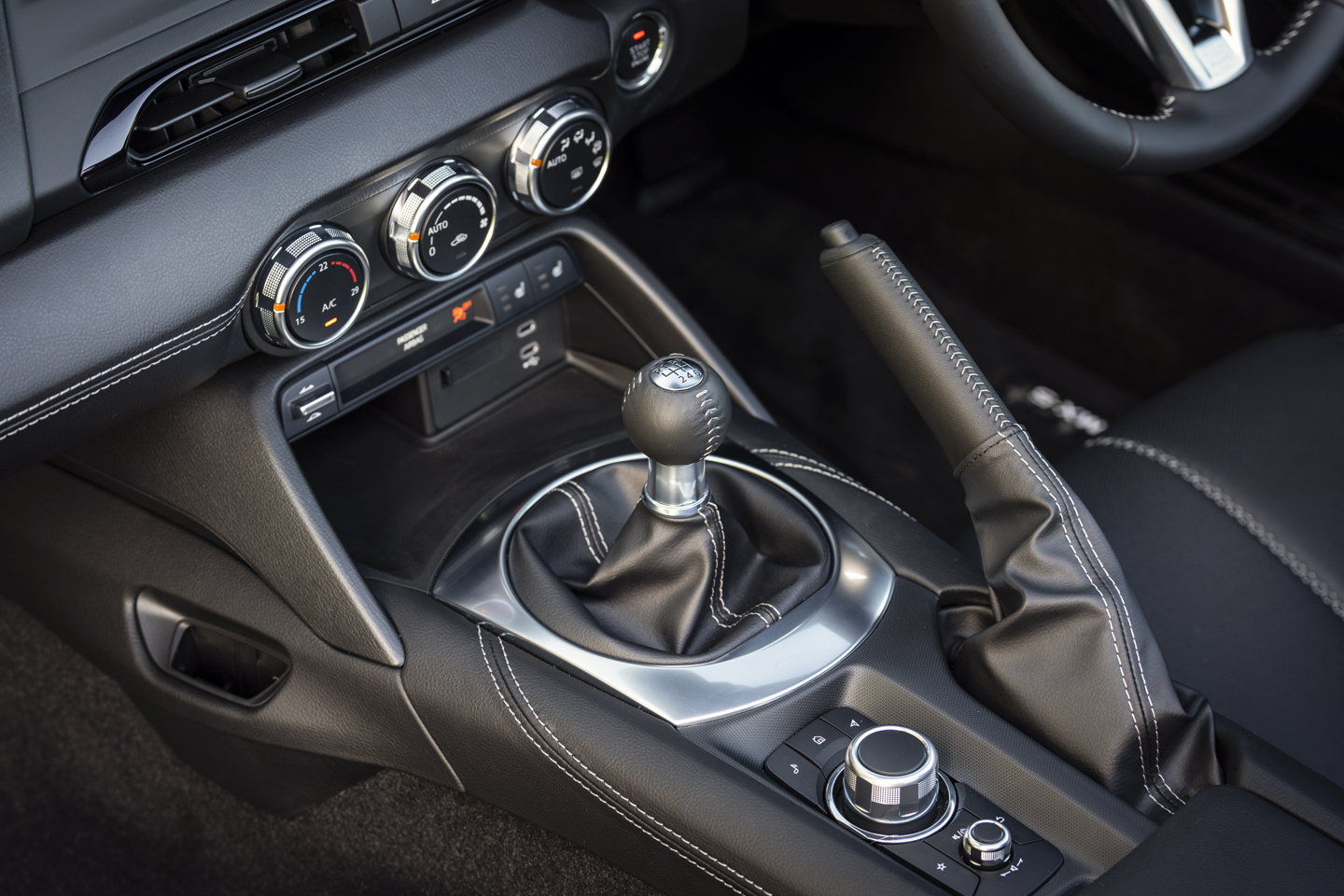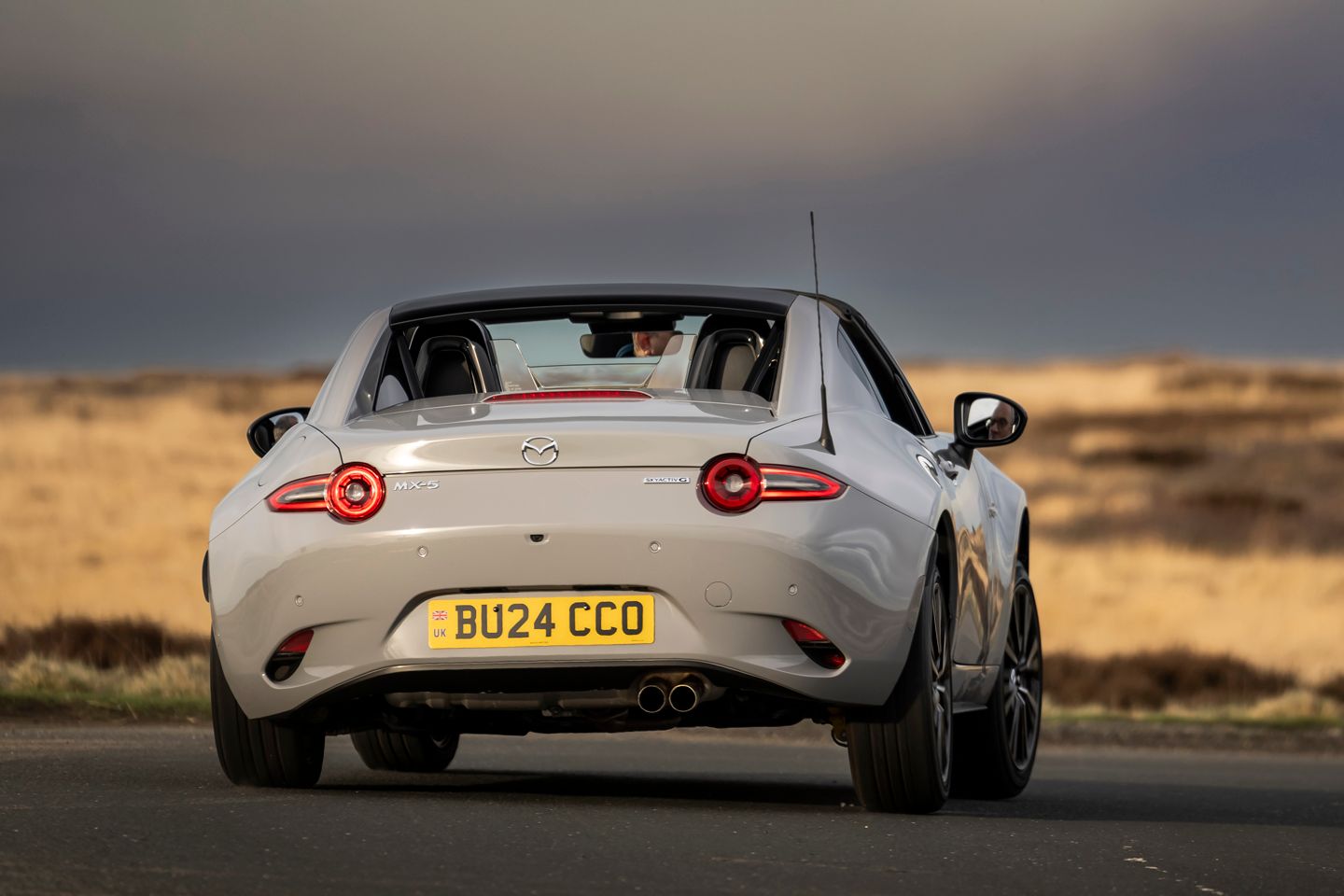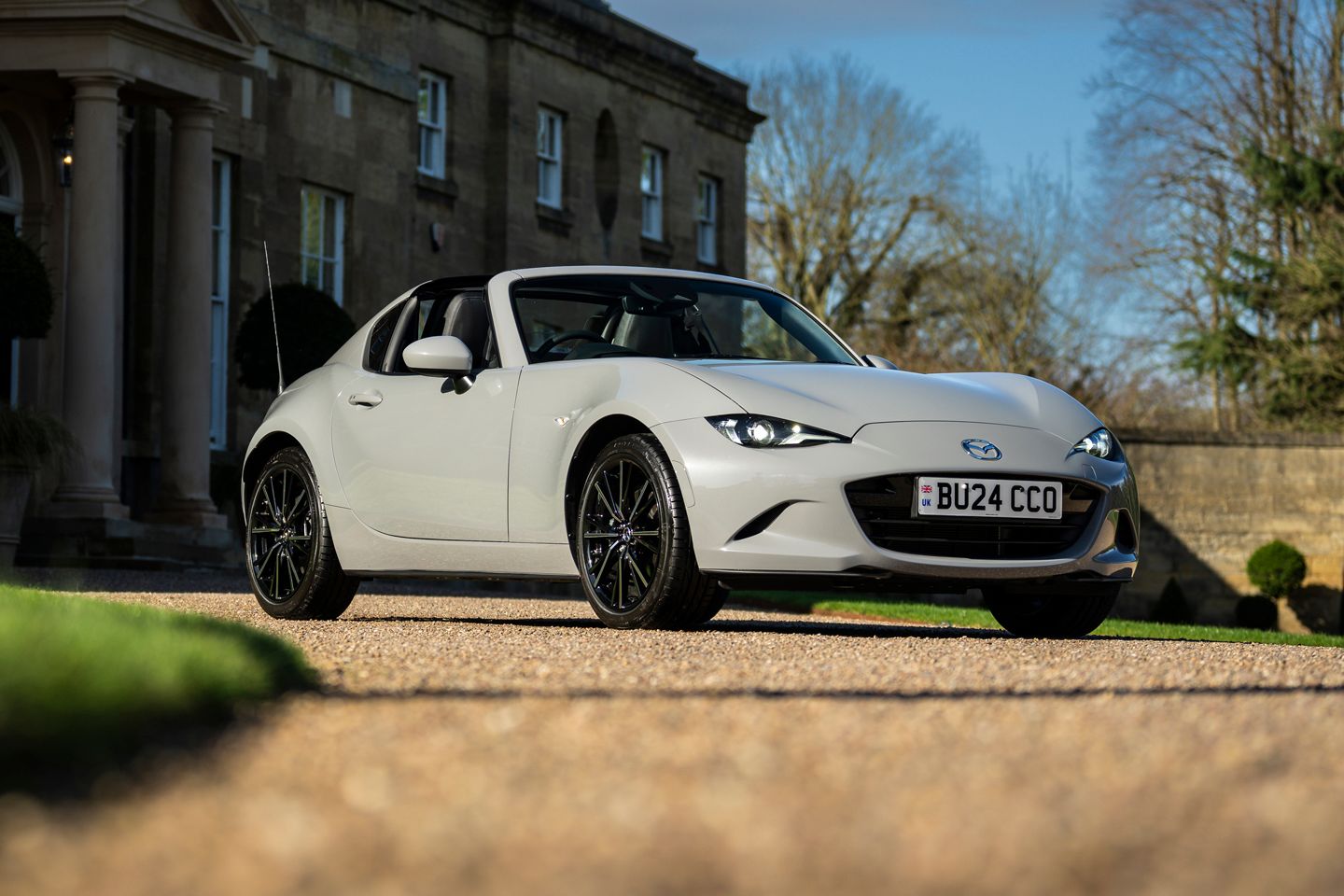2024 Mazda MX-5 RF Exclusive Line | PH Review
The latest ND update hasn't changed a great deal - so it's pretty much perfect

Sometimes 2015 doesn’t seem all that long ago, and seldom more so than when presented with a 24-plate Mazda MX-5 that looks very much like a nine-year-old one. Then you consider the state of the enthusiast car market, and 2015 feels like another century. Back then the GT86 was around (as was the Nissan 370Z), there was a manual Golf GTI, a Scirocco R, the M135i, the TT, the last few Peugeot RCZs, and a flat-six Cayman. And how's this for longevity: since the ND MX-5 launched, the Hyundai N sub-brand has arrived in the UK, launched three petrol-powered models, discontinued them all and embarked on an EV-only future. Yet still the little Mazda is here.
With all the good stuff intact, too. These days it’s unheard of to drive a run–of-the-mill production car with an atmospheric petrol engine, let alone one that revs beyond 7,500rpm. It now seems to be only exotic restomod coupes and hybrid supercars making peak power at 7,000rpm - so it's nice to see the Skyactiv-G four-cylinder still on sale. The six-speed manual is still standard fit too, of course, yet Mazda’s ‘Gram Strategy’ of efficiency means the CO2 rating of this car (153g/km) is lower than the 161g/km rating of the 160hp car back in 2015. It officially scores 41.5mpg, too.
And if the MX-5 still looks good on paper, it’s even better in real life. The latest facelift is modest (incorporating the DRLs into the main headlight unit), but such was the ND’s perfectly judged balance of modern and traditional styling cues that it still looks fresh. In a world of overblown performance cars 12 yards long and two lanes wide, the 1,000kg, sub-4,000mm MX-5 looks better than ever. If somebody had said in 2009 that in 15 years there would still be an MX-5 like this, you’d have been very happy indeed.


The refresh inside is very similar to that for the exterior; it’s instantly recognisable, but improved just a tiny bit. For the cabin, it’s the introduction of a new 8.8-inch infotainment screen that’s most notable, with smarter fonts and crisper displays than before - those just fiddling in the showroom will notice the improvement. Ought to make the lightly used option look older as well. Otherwise, it’s the same snug ND interior we’ve come to appreciate over the past decade. Complete still with body-coloured inserts on the doors as a reminder that primer grey should never be allowed anywhere near a sports car.
Probably the most significant change for the driving experience in 2024 is the introduction of a track mode for the DSC. And not before time. To go from everything to nothing in terms of assists could be a leap of faith for the MX-5, its roly-poly nature, short wheelbase and glassy steering meaning it could be a bit snappier at the limit than the layout might have suggested. Tuned cars that sat a bit lower were much more confidence-inspiring with all the assists off.
Anyway, the track mode (activated by a button by the door) does exactly what you’d want for such a setting: it lets the driver explore and enjoy the front-engined, rear-drive balance, safe in the knowledge there’s a helping hand in the background. Never does it feel too lenient or too strict, it's just there to help you have even more fun. Or at least as much fun as there is to have on very busy A43 roundabouts. Like the screen, track mode feels like a minor update that could make a big difference in normal use. Even in an MX-5, not every day always feels like a DSC off kind of day.


There’s also a new limited-slip diff in the 2024 MX-5; ostensibly there for stability benefits, the asymmetric unit boasts different cam angles for acceleration and deceleration for ‘optimal limiting force of slip during both actions’. Truth be told, it was hard to detect much difference in that behaviour this time around - traction was strong, and predictable - though it also wouldn’t be very Mazda to update tech like this for the sake of it. Something else to ponder when weighing up new against slightly used, perhaps. The good news is much as it always was: throttle response is great, the messages through your bum are consistent and the steering feels ever so slightly better connected as well. On those days where second-gear squiggles off roundabouts are what you want, the MX-5 is a more than willing partner.
Even at lower commitment levels, the Mazda is nothing less than a joy to pilot. Part of it will be nostalgia-driven, no doubt - nothing like this really exists any more, and it’s hard not to yearn for a time when 2.0-litre roadsters were enough and sports cars didn’t need gimmicks. But this is also the fourth generation MX-5 better than it’s ever been from the factory, perhaps finessed a little more than its manufacturer has found time to talk about. The ride seems a touch less jittery, the gearshift even sweeter, the brake pedal firmer and so on. Left to its own devices, Mazda is precisely the sort of firm that would keep honing its roadster till it fell off the map.
Wishful thinking, perhaps - and likely influenced by a beautiful blue sky above the retracted fastback roof - but the best MX-5s do tend to come at the end of a generation. Just ask Ben Lowden. And what could be more relevant in 2024 than a car that’s light, small and simple? What was encouraging in 2015 now seems like a miracle of downsizing and efficiency right when we need it most. The ND has already lived as long as any other MX-5, and nothing about a refresher drive suggests it doesn’t deserve to soldier on for a little longer yet. Quite the opposite.


It’ll cost you, though. The trouble with being on sale so long (and having to weather the economic maelstrom that’s been alongside for almost the entire time) is that MX-5 prices have gone up. And up. A top-of-the-range 2.0-litre soft top was £23,295 at launch; when it got the 184hp facelift that had leapt to £28k for the flagship RF; the orange 30th Anniversary roadster was a similar story. Now a 2.0-litre RF can’t be bought for less than £30k, and that goes without the track DSC that instantly feels worth having. A 2.0-litre Exclusive soft top is £32,400; the Homura with its lovely new Recaros is £34,800.
The Aero Grey RF Exclusive seen here is £34,870 as tested, and there’s a Homura above that. Broadly in line with inflation, sadly enough - £28,000 in 2018 is £35,000 now - but still quite big numbers to stomach when presented with an MX-5 on paper. Then again, Mazda’s iconic sports car was never one for Top Trumps; it’s always been about the intangible joy of driving and this one unequivocally delivers on that promise. In a world of one-second sprints to 60mph or 1,100hp, £200k Taycans and 2.2-tonne Hyundai hatchbacks, that bit feels more important than ever.
SPECIFICATION | 2024 MAZDA MX-5 2.0 EXCLUSIVE LINE RF
Engine: 1,998cc 4-cyl
Transmission: 6-speed manual, rear-wheel drive
Power (hp): 184@7,000rpm
Torque (lb ft): 151@4,000rpm
0-62mph: 6.5sec
Top speed: 136mph
Weight: 1,120kg (including 75kg driver)
MPG: 41.5mpg (WLTP combined)
CO2: 153g/km
Price: £34,300 (price as standard; price as tested £34,870 comprising Aero Grey paint for £570)





Gassing Station | General Gassing | Top of Page | What's New | My Stuff



